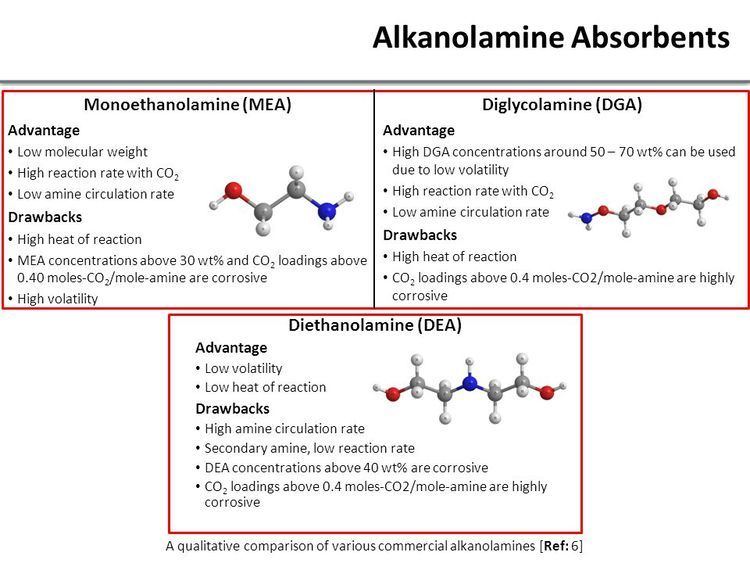 | ||
Role of acids in the degradation of alkanolamine during co2 and h2s removal process flv
Alkanolamines are chemical compounds that contain both hydroxyl (-OH) and amino (-NH2, -NHR, and -NR2) functional groups on an alkane backbone. The term alkanolamine is a broad class term that is sometimes used as a subclassification.
Contents
- Role of acids in the degradation of alkanolamine during co2 and h2s removal process flv
- 2 Aminoalcohols
- Beta blockers
- Natural products
- 2 Amino alcohols from amino acids
- References
2-Aminoalcohols
2-Aminoalcohols are an important class of organic compounds that contain both an amine and an alcohol functional groups. They are generated often by the reaction of amines with epoxides. Such compounds find a variety of industrial applications. Simple alkanolamines are used as solvents, synthetic intermediates, and high-boiling bases.
Common amino alcohols
Beta blockers
A subclass of beta blockers is often called alkanolamine beta blockers. Typical examples are:
Natural products
Most proteins and peptides contain both alcohols and amino groups. Two amino acids are alkanolamines, formally speaking: serine and hydroxyproline.
2-Amino alcohols from amino acids
In principle, each amino acid can be hydrogenated to the corresponding 2-aminoalcohol. Examples include prolinol (from proline) and valinol (from valine).
